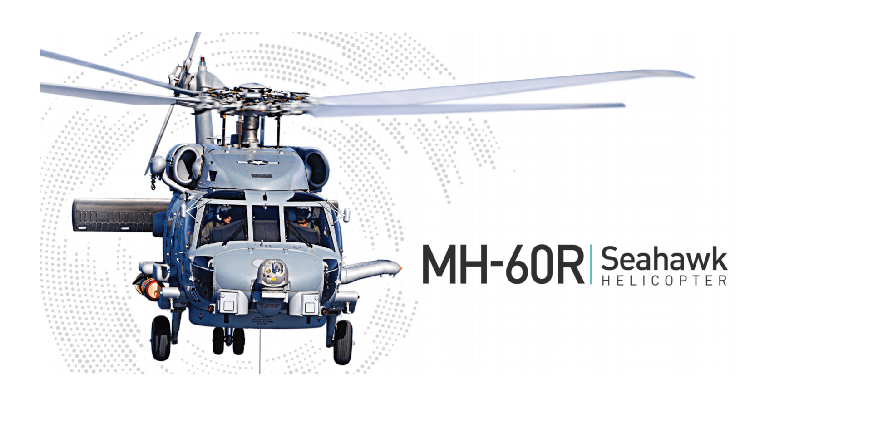The US Navy beast – MH-60R Seahawk is set to receive a major boost that will enhance its capabilities in hunting down rival submarines.
CAE Inc., a Canadian defense manufacturer, was awarded a subcontract by the American giant, Lockheed Martin, to provide Magnetic Anomaly Detection-Extended Role (MAD-XR) system for MH-60R Seahawk helicopter.
CAE has been collaborating with the US Navy and Lockheed Marin under Cooperative Research and Development Agreement (CRADA) until 2017. CRADA is a research and development agreement that lets the US military collaborate with private companies and universities to test the technology without inking a formal sale contract.

“Over the past several years we have conducted several trials with the US Navy to confirm the capabilities of the MAD-XR system on the MH-60R helicopter,” said Thomas M. Kane, Director, Naval Helicopter Programs, Lockheed Martin said in a statement. “Adding this to the MH-60R’s sensor suite will further advance the capabilities of the world’s most advanced anti-submarine warfare helicopter.”
Initially, under the terms of the Phase 1 contract, CAE will integrate MAD-XR with six MH-60R helicopters.
With China and Russia developing submarines quieter which makes it even harder to detect. Russia is experimenting with sonobuoy, an expendable sonar system, which will “hide” these submarines. The new jammer buoys will interrupt or hinder all sonobuoy communication channels. The new equipment is primarily intended for Borei-class, Dolphin-class SSBN’s and diesel-electric submarines, reported Navalnews.
Meanwhile, MAD systems have other methods to hunt submarines besides the sound.
The MAD system consists of a highly sensitive magnetometer, which is designed to sense changes in the earth’s magnetic field due to metallic objects in the vicinity. The range of the MAD system varies, but will generally detect anomalies at approximately 1,200 meters. When the system detects a magnetic anomaly an audio alert signals the crew and the display provide contact and range information.
The systems are not just capable of detecting enemy submarines in the sea but can also be used for land-based surveillance and detection. With a MAD system mounted on some type of ground vehicle or Unmanned Aerial Vehicle (UAV), the system could detect a variety of targets, such as armored vehicles or artillery.
CAE touts that the system is capable of detecting metallic objects through walls, buried underground, or hidden in dense forest canopies. MAD-XR has all the capabilities of the Advanced Integrated Magnetic Anamoly Detection system (AIMS), also a CAE product, which is also designated by the military nomenclature AN/ASQ-508 but in a smaller and lighter package.
While AIMS weighed about 27 kilograms, the MAD-XR is only 1.5 kilograms and is suitable for installation where size, weight and power consumption are a concern.
The AIMS system is integrated with other militaries including India’s P-8I Poseidons, Canada’s CP-140 Auroras, Turkey’s CN235 aircraft, Japan’s P-1, and P-3CK in South Korea.
“The integration of our MAD-XR system on the U.S. Navy’s MH-60R helicopter is testament to its powerful magnetic detection abilities,” said Daniel Gelston, Group President, Defence & Security, CAE said in a statement. “The MAD-XR system can provide defense forces with enhanced capabilities for operational missions such as submarine detection and search and rescue.”




